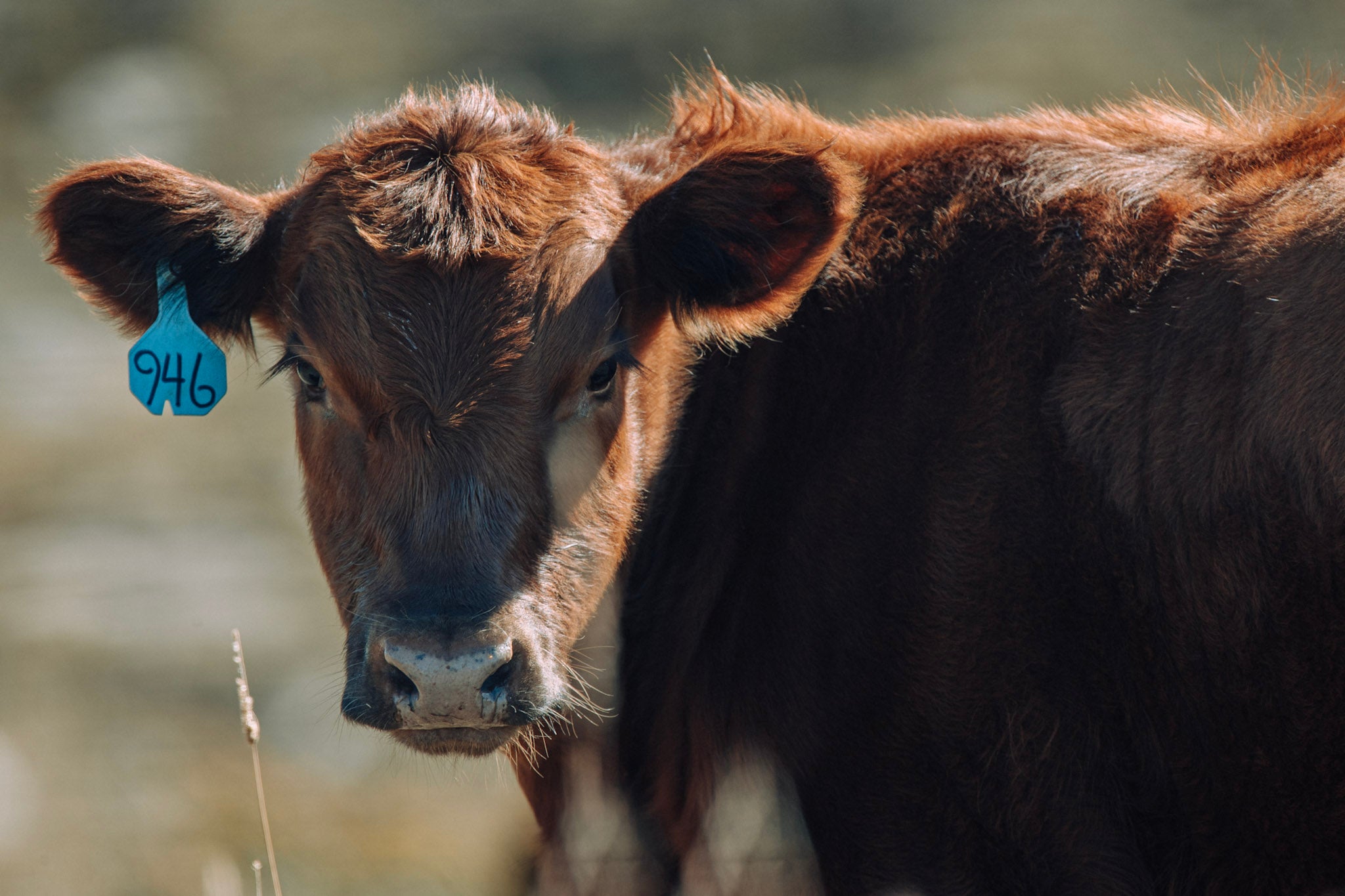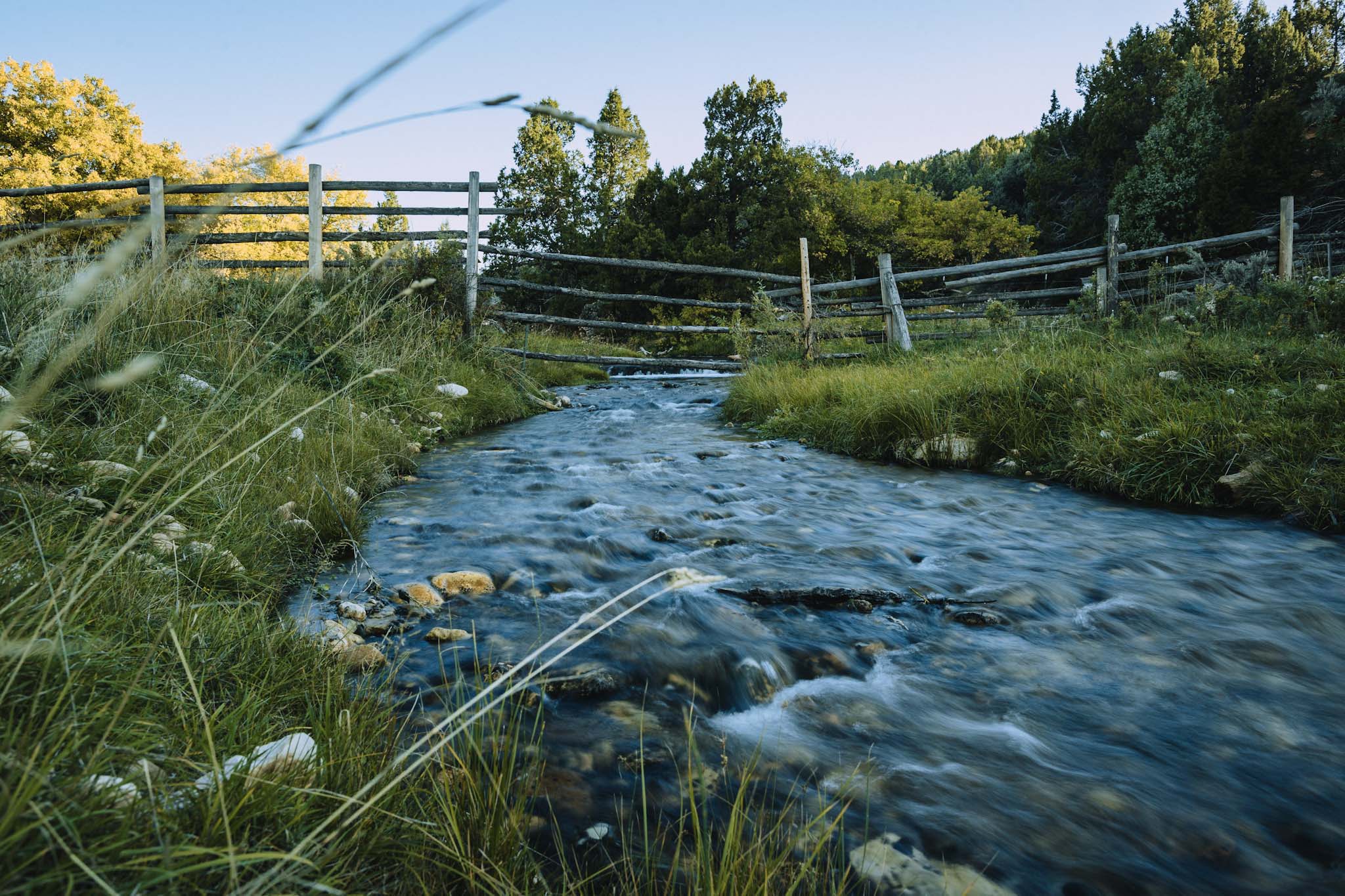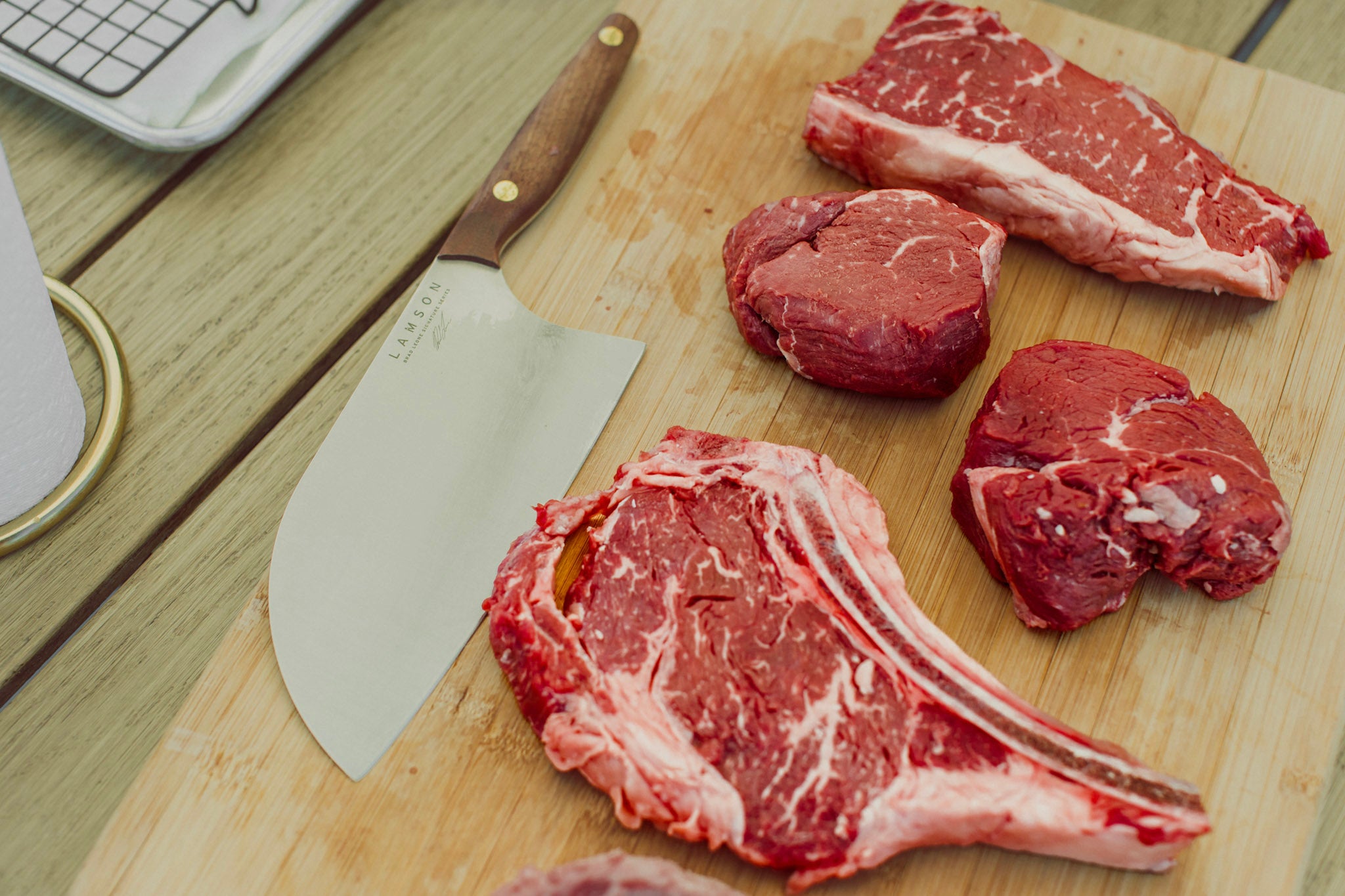
Red Angus Cattle: The Breed Behind Lazy T's High-Quality Beef
The cattle industry does not lack variety. In the United States alone, there are more than 70 recognized breeds of cattle. Each breed has unique traits created by decades—if not centuries—of selective breeding.
Here at Lazy T Ranch, our herd is predominately Red Angus. Although we often crossbreed, Red Angus forms the foundation of our premium beef offerings. Red Angus cattle provide top-notch characteristics and beef quality and are rich in history.
What are the distinctive characteristics that set Red Angus cattle apart as a premium beef breed?
Originating in the British Isles, Red Angus cattle have a red to reddish brown color and a medium-sized frame. They’re polled (hornless) and have upturned ears and a refined head. Their most important traits, however, are their calving ease, meat quality, and longevity.
Generally, Red Angus cattle are easy to handle. They have a docile temperament, which makes them a fantastic breed for experienced and novice ranchers. And because of their good attitude, they’re less likely to experience stress. A winning factor when it comes to beef!
Stress can negatively impact cattle’s growth, health, and beef quality. The more tolerant and adaptive a breed is to changes in their environment, the better their beef.
Along with being relaxed animals, Red Angus cattle are hardy. They can survive harsh weather and thrive at high altitudes. They’re resistant to many common health issues such as pink eye and foot rot. Also, they have a long lifespan, with some cows living up to 20 years.
From a calving standpoint, Red Angus cattle are first class. The bulls have large scrotums and high semen production. The females reach puberty at a young age and are famous for their fertility and longevity in the herd. As well as calving easily because of their dominant polled gene, they have excellent milk production and a strong maternal instinct. Their calves mature faster than other breeds, so they can be sold for beef at a younger age.
Not only are Red Angus cattle docile and hardy, but they yield marbled beef—meat with delicious intramuscular fat. The marbling paired with superior muscling has made Angus cattle a staple of the American beef industry.
Red Angus cattle have a high feed efficiency rate, meaning they require less feed than other cattle breeds to gain weight. With minimal days on feed, they can produce Prime and Choice-grade beef. This is great news for ranchers and farmers. A high feed efficiency rate saves money on feed costs and reduces the environmental impact of cattle farming.
Because of Red Angus cattle’s positive characteristics, they’re often used for crossbreeding to improve the genetics of other breeds. They are prone to heterosis—the tendency of a crossbred individual to show qualities superior to those of both parents.
There’s no question as to why Red Angus cattle are a premium beef breed.
Sidenote: Red and Black Angus have the characteristics of Aberdeen Angus. The breeds are the same except for their color. Red Angus cattle have a reddish color due to a recessive gene that’s only expressed when both parents carry it. So, Red Angus cattle must be carefully bred to maintain the desired coloration.
How does Lazy T Ranch leverage the qualities of Red Angus cattle to produce high-quality beef?
Red Angus cattle are known for producing meat rich in marbling, tenderness, and flavor. As the animal grows, it develops intramuscular fat, which contributes to the beef’s quality.
You’ve probably seen the label “Angus” on beef products. The word doesn’t simply refer to Red or Black but rather a type of beef that meets specific requirements. To be labeled “Certified Angus Beef” by USDA Graders, cattle must have . . .
- Modest or higher marbling
- Medium or fine marbling texture
- “A” maturity
- 10- to 16-square-inch ribeye area
- Less than 1,050-pound hot carcass weight
- Less than 1-inch fat thickness
- Superior muscling
- No hump on the neck exceeding 2 inches
- Practically free of capillary ruptures
- No dark cutting characteristics
With Angus beef, you can expect juicy, flavorful meat at an affordable price, which is why Angus is the most popular breed of beef cattle in the U.S. Of course, there are different levels of quality (grades) within the Angus beef category. USDA Prime is the highest grade, followed by USDA Choice and USDA Select.
Along with having incredible flavor and tenderness, Angus beef is generally healthier than other types of beef. It’s lower in calories and is a fantastic source of protein and essential nutrients. Red Angus contains high levels of omega-3 fatty acids, which have been linked to lowering the risk of heart disease, improving brain function, and reducing inflammation.
At Lazy T Ranch, we maximize the qualities of our Red Angus cattle by crossbreeding. This is a common practice in the beef industry and is meant to enhance genetics for better herds (longevity, calving ease, beef quality).
As mentioned above, Red Angus offers plenty of natural advantages. Compared to Black Angus, Red provides uniformity to a crossbreeding system (because red is the most popular color of cattle breeds worldwide). The color is also more heat tolerant than black.
We frequently crossbreed our Red Angus with Hereford. Known for their efficiency and high yield of beef, Hereford are red, medium-sized cattle with white markings on their face, crest, dewlap, and underline. They graze easily and thrive in a range of climates.
Crossbreeding our Red Angus with Hereford increases longevity, feed efficiency, beef yield, and the overall well-being of our herd.
What is the history and origin of the Red Angus breed, and how did it become popular?
The origin of Red Angus cattle traces back to that of Aberdeen Angus. Vikings introduced small, dun-colored, polled cattle to England and Scotland. The cattle were interbred with Scotland’s black-horned Celtic cattle, which resulted in Aberdeen Angus.
According to cattle breeder Eric L.C. Pentecost, the black Scottish cattle were too light to produce large draught oxen, so in the eighteenth century, English longhorns, mostly red in color, were crossbred with the black polled cattle. The offspring were all black due to black being a dominant color. However, the cattle possessed the red gene. Keeping with Mendel’s law of heredity, later interbreeding resulted in one red calf per four calves.
Early on, black was chosen as the proper color for the breed. Measures were taken in 1917 to ensure a pure black strain. This frustrated cattlemen who believed in the qualities of Red Angus.
Much debate happened over the years, especially when Angus was brought to America and increased in popularity. But in 1954, Red Angus was recognized as its own breed.
Today the Red Angus breed is popular domestically and internationally, with growing notoriety. It has become the leading U.S. beef breed in semen exports.
We believe Red Angus cattle produce high-quality beef and create an efficient foundation for our herd. See for yourself! Try one of our dry-aged beef boxes, and bring our beef to your table.


